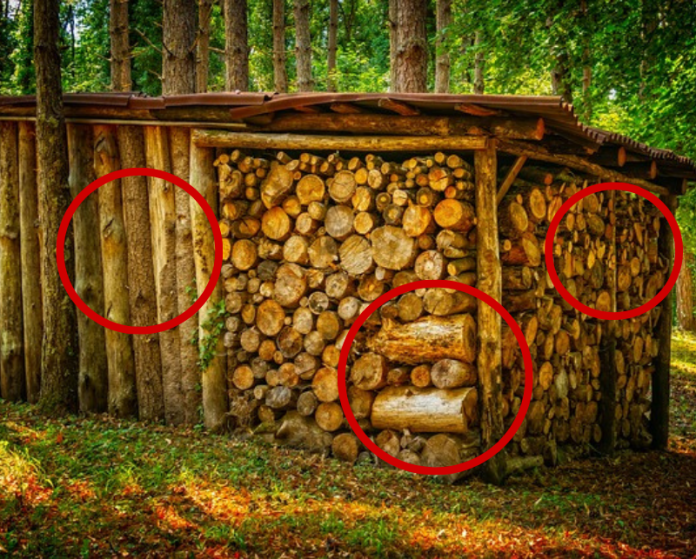Winter is on its way! For some people, it may already be here. Firewood is a big deal if you live in a place where wood heat is the only or main source of heat in the winter.
The Best Kind of Wood to Burn
Where you live and what kinds of trees are around will determine what kind of wood is best to burn. Hardwoods, like oak and cherry, burn longer and give off more heat, while softwoods, like alder, burn faster and give off less heat. You will need more wood if you are burning softwoods. If you burn hardwoods, you will get more “bang for your buck,” but you will need a lot of kindling because hardwoods can take longer to catch fire and start burning. Hardwoods can also take longer to dry and season, and they are notoriously harder to split. If you have a wood splitter, this shouldn’t be a problem, but if you are splitting wood by hand, you will need wedges and a sledgehammer if you are working with a lot of hardwoods and larger rounds.
In many climates, you will end up with a mix of hard and soft woods, which can be good. You can start a fire by burning softwood, and then you can keep it going by putting a log of hardwood on it. If you are using a mix, you can work that into how you stack the wood so that when you bring wood from your stack to your stove or fireplace, you will have different kinds of wood in each load. This will make it much easier to get the fire going and keep it hot. If a fire is your only heat source in the colder months, getting a fire going quickly and efficiently can make your living space much more comfortable.
How to Test if Your Wood is “Good”
No matter what kind of wood you want to burn, it is important that it has been properly seasoned. How long it takes a piece of wood to dry depends on many things, such as the type of wood, the climate (colder, more humid climates take longer), the size of the log, and whether or not the tree was still alive when it was cut.
You can tell if a log is dry by how much it weighs and how it sounds when it hits another piece of wood. Dry wood will be lighter and make a hollow, springy sound, whereas wet wood will simply thud. If you buy wood from someone else, you can’t always tell just by looking at how dry it is. The sound test is a good way to make sure that the wood is dry and ready to burn.
Ideally, wood should be dry and well-seasoned before you stockpile and store it. If you want to harvest your own wood, you should plan your wood situation well in advance. You should cut and buck up your rounds as soon as possible in the year and let the wood dry out over the summer before you split and store it.
How To Store Wood Correctly
There are a lot of tips and tricks for storing firewood that can make the process go more smoothly and ensure you get the most out of your wood. But safety and airflow are the two most important things to think about.
If you don’t stack wood carefully, you could end up with a dangerous stack that falls on you, which is something no one wants. Failure to maintain proper airflow can also lead to moisture accumulating within your stack, which can result in wet, moldy wood waiting for you in the middle of your wood stack: not a pleasant discovery in the middle of December!
There are many ways to stack wood, and the best one for you will depend on your surroundings and needs. It’s best to store your wood in a shed or other covered area, especially in places where it rains a lot. In general, putting a tarp over your woodpile is not the best way to store the wood you plan to burn this season, especially if you live in a wetter or windier place. Tarps can blow away, tear, or leak. If you only have tarps, it’s not hard to make a makeshift shed out of them. Set up corner posts around your woodpile and hang one tarp above the pile at a slight angle to keep rain from getting on the wood. Use the other tarps to cover the sides of the pile. Use some pallets or 2x4s to keep the bottom layer of wood off the ground. This will keep water from getting into the wood and allow air to flow under the stack.
Stability is especially important when building a freestanding woodpile that isn’t supported on any side. The “log-cabin” method is one of the most popular and tried-and-true ways to stack wood. This means that you should switch between vertical and horizontal pieces in each row. The alternating pattern will leave space between the logs so that air can flow through. This will keep moisture from building up and also give the stack a stable base. As you use the wood, you will want to work your way down from the top, row by row.
If you’re stacking wood between walls in a dry, covered area, like a shed, you may find that a tighter stacking method will let you fit the most wood in the space while still letting air flow. In this case, you might want to stack your wood so that it all faces the same way instead of in different directions. Because the stack will be supported on three sides, the main thing you’ll have to worry about in terms of stability is the pile falling toward you. Make sure the pile isn’t too heavy at the top to avoid this. Make sure to spread out the stack so that there are no big piles on either side or in the middle. Instead of trying to pull wood out of the middle, always start pulling logs from the top and work your way down.
A good rule of thumb is not to stack wood in piles that are taller than you are. It’s not a good idea to reach up and pull wood down from above your head because pieces could come loose and fall.
Putting the pieces together takes some skill, but it’s not rocket science either. Many people who use wood to heat their homes walk from the wood pile to the fireplace every day. Making a stable wood pile with good airflow will make this walk much more pleasant.



